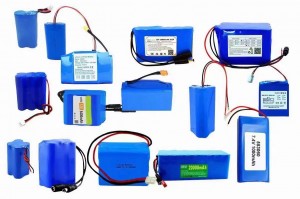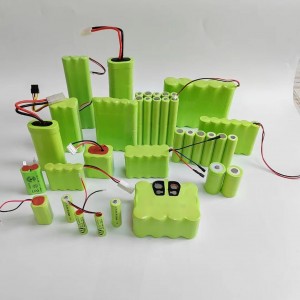26650 lithium batteries are welcomed by the majority of consumers for their high safety, long cycle life, stable charging and discharging performance and other characteristics. They are widely used in electric tools, lighting, wind energy storage, instrumentation, UPS, medical equipment, communication equipment and other fields. But you may not know, there are different types of 26650 lithium batteries on the market, including IMR, ICR, INR and IFR, the next article will introduce the differences between these four types of batteries in detail, to help you better understand and choose the right type of battery.
1) IMR26650 battery
I: lithium (Li); M: manganese (Mn); R: round cell (R)
IMR26650 battery is a Lithium Manganese Oxide (LiMn2O4) chemical system battery with high discharge current, high safety and good thermal stability.IMR batteries are commonly used in devices that require high current discharge, such as high power portable lighting devices, electronic cigarettes, etc.
Advantages:
High discharge current: IMR batteries can withstand high discharge current, suitable for devices requiring high current.
High safety: IMR batteries are not easy to thermal runaway when overcharging, overdischarging, and overcurrent, which is safer.
Disadvantages:
Lower energy density: compared to other 26650 lithium batteries, IMR batteries have a slightly lower energy density and a shorter usage time for a single charge.
Faster self-discharge: IMR battery self-discharge rate is higher when it is not used for a long time, so it needs regular charging and maintenance.
2) ICR26650 battery
I: lithium (Li); C: cobalt (Co); R: round cell (R)
ICR26650 battery is a lithium cobalt oxide (Lithium Cobalt Oxide, LiCoO2) chemical system of the battery, with high energy density and stable operating voltage, commonly used in consumer electronics products.
Pros:
High energy density: ICR batteries have a high energy density and store more power in a smaller size, making them suitable for devices that are limited in size but need power for a long period of time.
Stable working voltage: ICR batteries have a more stable voltage during discharge and can provide continuous power output.
Light weight: due to its high energy density, ICR batteries are relatively light weight and easy to carry.
Disadvantages:
Lower safety: ICR batteries have safety risks, especially in the case of high power consumption, ICR batteries are more likely to overheat and unstable, prone to thermal runaway, there are certain safety risks.
3) INR26650 battery
I: lithium (Li); N: nickel (Ni); R: round cell (R)
INR26650 battery is a Lithium Nickel Manganese Cobalt Oxide (NCM or NMC) chemical system battery, combining the advantages of high energy density and high discharge current, which is a better overall performance battery type.
Pros:
Excellent overall performance: INR batteries combine high energy density and high discharge current, making them suitable for a variety of application scenarios.
Good safety: INR batteries show enhanced stability and lower risk of overheating under high power consumption.
Disadvantages:
Higher cost: INR batteries are more expensive due to the cost of materials and the complexity of the manufacturing process.
4) IFR26650 battery
I: lithium (Li); F: iron (Fe); R: round cell (R)
IFR26650 battery is a kind of lithium iron phosphate (Lithium Iron Phosphate, LiFePO4) chemical system of the battery, has a very high safety and long life, is the 26650 lithium batteries in the safest and longest life of the battery, commonly used in power tools, electric vehicles and energy storage equipment and other fields.
Advantages:
Extremely high safety: IFR batteries are chemically stable and are not prone to thermal runaway, making them one of the safest lithium batteries on the market today.
Long cycle life: The cycle life of IFR battery can reach more than 2000 times, which is several times that of other types of lithium batteries, and has a cost effect in the long run.
Stable discharge voltage: IFR batteries are more stable in the discharge process, suitable for devices that require stable voltage output.
Disadvantages:
Lower energy density: the IFR compared to INR, the battery stores less energy, in the case of the same capacity, the volume will be larger.
5) Comparative Analysis
Energy density (ranked from low to high): IFR < IMR < INR < ICR;
Safety (ranked from high to low): IFR>IMR>INR>ICR;
Cycle life (ranked from high to low): IFR > IMR > INR > ICR;
Most of the 26650 batteries produced by Vantage are IFR 26650 batteries, and all of them have high performance.
In conclusion, IMR, ICR, INR and IFR 26650 batteries each have their own unique advantages and applicable scenarios. IMR batteries are suitable for devices that require high discharge current but do not have high power requirements, ICR batteries are suitable for consumer electronics that require a lot of energy but do not require high discharge, INR batteries are suitable for scenarios that require comprehensive performance, and IFR batteries are suitable for devices that have high requirements for battery safety and IFR batteries are ideal for devices that require high battery safety and longevity.
Post time: Oct-25-2024






